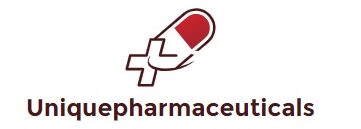Table of Contents
About Flat Head Syndrome
Babies often establish a flattened head when they’re a couple of months old, normally as an outcome of them investing a great deal of time resting on their back.
This is called flat head syndrome, and there are 2 primary types:
- plagiocephaly– the head is flattened on 1 side, triggering it to look unbalanced; the ears might be misaligned and the head appears like a parallelogram when seen from above, and often the forehead and face might bulge a little on the flat side
- brachycephaly– the back of the head ends up being flattened, triggering the head to broaden, and periodically the forehead bulges out
These issues are rather typical, impacting around 1 in every 5 infants at some time. In most cases they aren’t a significant cause for issue, as they do not have any impact on the brain and the head shape will frequently enhance by itself gradually.
Your infant will not experience any discomfort or other signs, or any issues with their basic advancement.
What triggers plagiocephaly and brachycephaly?
The skull is comprised of plates of bone that reinforce and collaborate as a kid grows older. A young infant’s skull is still reasonably soft and can alter shape if there’s continuous pressure on a specific part of their head.
Reasons why this might occur consist of:
- sleeping on their back — the back or side of a child’s head can end up being flattened as an outcome of constantly sleeping on their back, however it is very important they do this to minimize the danger of unexpected baby death syndrome (SIDS)
- issues in the womb — pressure can be put on a child’s head prior to it’s born if they’re a bit compressed in the womb or there’s an absence of amniotic fluid to cushion them
- being born too soon — early infants are most likely to establish a flattened head since their skull is softer when they’re born, and they might choose to rest their head on 1 side initially as they’re not yet able to move their head themselves
- neck muscle tightness — this can avoid a child turning their head a specific method, implying 1 side of their head is put under more pressure
Occasionally, a flattened head can be triggered by the plates of the skull collaborating prematurely. This is called craniosynostosis.
When to get medical recommendations
Speak to your health visitor or GP if you’re worried about the shape of your infant’s head or believe they might have issues turning their head. They can analyze your infant’s head and recommend things you can do to assist.
A somewhat flattened head isn’t normally anything to stress over, however it’s an excellent concept to get recommendations early on so you can take actions to stop it getting any even worse.
What you can do
The shape of your infant’s head need to enhance naturally gradually as their skull establishes and they begin moving their head, rolling around and crawling.
To take pressure off the flattened part of your infant’s head:
- provide your infant time on their stomach throughout the day– motivate them to attempt brand-new positions throughout play time, however make certain they constantly sleep on their back as this is most safe for them
- change your infant in between a sloping chair, a sling and a flat surface area — this guarantees there isn’t continuous pressure on 1 part of their head
- alter the position of toys and mobiles in their cot — this will motivate your infant to turn their head on to the non-flattened side
- alternate the side you hold your infant when feeding and bring
- minimize the time your infant invests resting on a company flat surface area, such as safety seat and prams — attempt utilizing a sling or front provider when useful
If your infant has problem turning their head, physiotherapy might assist loosen up and reinforce their neck muscles. Corrective surgical treatment might be required if they have craniosynostosis.
Find out more about how craniosynostosis is treated
Helmets, Headbands and Mattresses
There are specifically created helmets and headbands that some individuals declare can assist enhance the shape of a child’s skull as they grow. These gadgets use pressure to “bulging” parts of the skull and ease pressure from other parts, possibly enabling development in the flatter locations.
Treatment is begun when the kid’s skull is still soft, normally at around 5 or 6 months old, and the gadget is used practically continually (as much as 23 hours a day) for numerous months.
But these helmets and headbands usually aren’t suggested since:
- there isn’t clear proof to recommend they work
- they frequently trigger issues such as skin inflammation and rashes
- they’re costly, usually costing around ₤ 2,000
- your infant will require to be examined every couple of weeks to monitor their head development and make any essential modifications
- they might be unpleasant and upsetting for your infant
Some individuals attempt unique curved bed mattress that are created to disperse the weight of a child’s head over a bigger location so less pressure is put on a specific point of their skull. These are less expensive than helmets and headbands, however there’s presently just minimal proof to recommend they might assist.
Will my kid’s head shape go back to typical?
Mild flattening of the head will normally enhance if you utilize the easy procedures explained on this page, although it might be a number of months prior to you begin to observe an enhancement. Your infant’s head might not go back to an entirely best shape, however by the time they’re 1 or 2 years of ages any flattening will be hardly obvious.
More extreme cases will likewise improve gradually, although some flattening will normally stay. The look of your kid’s head need to enhance as they end up being more mobile and their hair grows. It’s extremely uncommon for a kid to experience issues such as teasing when they reach school age.
You might think about utilizing a helmet or headband if you’re fretted about your kid, however it’s unclear whether these constantly work. You need to likewise keep in mind the trouble, cost and possible pain for you and your kid.

